The ASAM Principles of Addiction Medicine 6th Edition by Shannon Miller, ISBN-13: 978-1496370983
Original price was: $50.00.$14.99Current price is: $14.99.
The ASAM Principles of Addiction Medicine 6th Edition by Shannon Miller, ISBN-13: 978-1496370983
[PDF eBook eTextbook]
- Publisher: LWW; 6th edition (December 6, 2018)
- Language: English
- ISBN-10: 1496370988
- ISBN-13: 978-1496370983
Selected as a 2023 Doody’s Core Title!
Thoroughly updated with the latest international evidence-based research and best practices, the comprehensive sixth edition of the American Society of Addiction Medicine’s (ASAM) official flagship textbook reviews the science and art behind addiction medicine and provides health care providers with the necessary information to not only properly diagnose and treat their patients, but to also serve as change agents to positively impact clinical service design and delivery, as well as global health care policy.
- Updated with the latest developments in Addiction Medicine and featuring chapters on emerging and high impact topics such as electronic cigarettes, cannabis as medicine, opioid overdose and opioid use disorder treatment, co-occurring pain and addiction, understanding addiction-related clinical trials, digital media as treatment platforms, TBI, neuromodulation, harm reduction, behavioral addictions, research behind spirituality and mutual help programs, co-occurring psychiatric disorders, and guidelines for using non-stigmatizing language.
- Covers all areas fundamental to Addiction Medicine, including neurobiology and pharmacology, epidemiology and prevention, management of intoxication and withdrawal syndromes, special populations, pharmacological and psychologically-based interventions, and medical consequences of addiction.
- Touches on international and military veteran-unique issues that are of special importance to the field.
- Brings together the world’s leading addiction medicine experts, editors, and contributors with expertise in internal medicine, psychiatry, emergency medicine, public health, neuroscience, pediatrics, obstetrics & gynecology, and other fields.
- Sought broadly as a critical textbook for graduate medical education, as well as for everyday clinical practice and policy-making, The ASAM Principles of Addiction Medicine, Sixth Edition is ideal for addiction medicine and addiction psychiatry fellows, residents, medical students, mental health practitioners, nurse practitioners, physician assistants, primary care physicians, researchers, and more.
Table of Contents:
Cover
Title Page
Copyright
Dedication
Section Editors
Contributors
Preface
A Note About Terminology
Acknowledgments
Contents
SECTION 1 Basic Science and Core Concepts
CHAPTER 1 Drug Addiction: The Neurobiology of Motivation Gone Awry
INTRODUCTION
ADDICTION: A DEVELOPMENTAL DISORDER
NEUROBIOLOGY OF ADDICTIVE DRUGS: BINGE–INTOXICATION STAGE
NEUROBIOLOGY OF DRUG ADDICTION: WITHDRAWAL–NEGATIVE AFFECT STAGE
NEUROBIOLOGY OF DRUG ADDICTION: PREOCCUPATION–ANTICIPATION (“CRAVING”) STAGE
VULNERABILITY TO ADDICTION
Genetic Factors
Environmental Factors
Comorbidity with Mental Illness
STRATEGIES TO COMBAT ADDICTION
Preventing Addiction
Treating Addiction
Pharmacological Interventions
Behavioral Interventions
Treating Comorbidities
CHALLENGES FOR SOCIETY
SUMMARY
ACKNOWLEDGMENTS
CHAPTER 2 Recommended Use of Terminology in Addiction Medicine
INTRODUCTION
RECOMMENDED CONCEPTS AND TERMINOLOGY BY CONSTRUCT
Avoid Stigmatizing the Patient or the Condition, and Seek Medically Defined Terminology
The Spectrum of Use
The Disease
Treatment
CONCLUSIONS
CHAPTER 3 The Epidemiology of Substance Use Disorders
INTRODUCTION
SOME EPIDEMIOLOGICAL PRINCIPLES
ALCOHOL USE DISORDERS
Prevalence
Incidence
DRUG USE DISORDERS
Prevalence
Incidence
RECENT TRENDS OF ALCOHOL, TOBACCO, AND ILLICIT DRUG USE
REMISSION FROM SUBSTANCE USE DISORDERS
CORRELATES AND SUSPECTED RISK FACTORS
Gender
Age
Race and Ethnicity
Family History
Employment Status and Occupation
Marital Status
Educational Level
COMORBIDITY OF ALCOHOL AND DRUG USE DISORDERS
CONCLUSIONS
ACKNOWLEDGMENTS
CHAPTER 4 The Anatomy of Addiction
INTRODUCTION
PRIMER ON NEUROANATOMY
Limbic System
Interface of the Limbic System and the Basal Ganglia
Executive Function and Cortical Involvement
NEUROANATOMY OF DRUG REINFORCEMENT
Preclinical Studies of Drug Reinforcement
Psychostimulants
Opioids
Cannabinoids
NEUROANATOMY OF DRUG ADDICTION
MOVING FORWARD
CHAPTER 5 From Neurobiology to Treatment: Progress against Addiction
INTRODUCTION
BLOCKADE OF DRUG TARGETS
MIMICRY OF DRUG ACTION
BLOCKADE OF THE ADDICTION PROCESS
ACKNOWLEDGMENTS
CHAPTER 6 Clinical Trials in Substance-Using Populations
INTRODUCTION
ELEMENTS OF A CLINICAL TRIAL
TYPES OF CLINICAL TRIALS
Efficacy Trials
Phase IV Trials
Effectiveness Trials
Comparative Effectiveness Studies
FEATURES OF CLINICAL TRIALS
Randomization
Blinding
Sample Size, Power, and Effect Size
Statistical Analysis Plans
Statistical Significance and Effect Sizes
THE RESEARCH QUESTION DICTATES VARIOUS ASPECTS OF TRIAL DESIGN
Superiority Designs
Noninferiority Designs
Adaptive Designs
OUTCOME METRICS USED IN CLINICAL TRIALS
Quantification of Substance Use
Measuring Withdrawal Syndromes
Measuring Drug Craving
Measuring Cognitive Function
Psychiatric Scales
Addiction-Focused Scales
Reduction of HIV Risk Scales
Quality of Life Measures
Patient-Reported Outcome Measures
Pharmacokinetic Measures
Healthcare Service Utilization Measures
Cost Analysis–Related Measures
Treatment Adherence Measures
MONITORING AND QUALITY CONTROL
REPORTING RESULTS IN A JOURNAL ARTICLE
CONCLUSIONS
Acronyms Explained
CHAPTER 7 The Addiction Medicine Physician as a Change Agent for Prevention and Public Health
WE ARE RESPONSIBLE
PROTECTING AND PROMOTING THE PUBLIC HEALTH
THE ROLE OF THE ADDICTION MEDICINE PHYSICIAN
TRANSFORMATIONAL CHANGE
A PROVEN APPROACH TO EFFECTING CHANGE IN HEALTH CARE
Dr. Smart’s Emergence as a Change Agent
Dr. Smart Plots a Course
Dr. Smart and the SUD Standards of Care Team
Dr. Smart’s Initiative Gets Traction
The SUD Standards of Care Team Follows Through
The SUD Standards of Care Team Becomes Institutionalized
SUMMARY
SECTION 2 Pharmacology
CHAPTER 8 Pharmacokinetic, Pharmacodynamic, and Pharmacogenomic Principles
INTRODUCTION
BASIC PHARMACOLOGY CONCEPTS
Pharmacokinetics
Pharmacogenomics
Pharmacodynamics
Receptors
SUMMARY
ACKNOWLEDGMENTS
CHAPTER 9 The Pharmacology of Alcohol
DEFINITION
SUBSTANCES INCLUDED IN THIS CLASS
FORMULATIONS AND METHODS OF USE
CLINICAL USES
BRIEF HISTORICAL FEATURES
EPIDEMIOLOGY
PHARMACOKINETICS
Absorption and Metabolism
PHARMACODYNAMICS
Central Nervous System
Other Organ Systems
DRUG–DRUG INTERACTIONS
NEUROBIOLOGY (MECHANISMS OF ADDICTION)
Molecular Sites of Alcohol Action
GABAA and Glycine Receptors
Glutamate Activated Ion Channels
Other Ion Channel Subtypes
Pharmacological Studies Implicating Other Neurotransmitter Systems
ADDICTION LIABILITY
Sensitization
Tolerance and Dependence
Toxicity States
Medical Complications
CONCLUSIONS/FUTURE RESEARCH
ACKNOWLEDGMENTS
CHAPTER 10 The Pharmacology of Nonalcohol Sedative Hypnotics
FORMULATIONS AND CHEMICAL STRUCTURE
BRIEF HISTORICAL FEATURES
PHARMACODYNAMICS
PHARMACOKINETICS
PHARMACOGENOMICS
DRUG–DRUG INTERACTIONS
SPECIAL CONSIDERATION OF CONCOMITANT USE OF BENZODIAZEPINES AND OPIOIDS
MECHANISM OF TOLERANCE AND WITHDRAWAL
ADDICTION LIABILITY
EPIDEMIOLOGY OF UNHEALTHY USE
TOXICITIES
MEDICAL COMPLICATIONS
CONCLUSION
CHAPTER 11 The Pharmacology of Opioids
DEFINITION OF DRUGS IN THE CLASS
SUBSTANCES INCLUDED IN THE CLASS
Naturally Occurring Agents
Synthetic Agents
Clinical Uses
Nonmedical Use of Prescription Medications (NUPM)
Historical Features
EPIDEMIOLOGY OF OPIOID USE DISORDER
Neurobiology, Mechanisms of Action, and Relationship to Addiction Liability
Distribution in CNS and Mediation of Different Functions
MOP-r Signaling Properties and Addiction Liability
PHARMACOKINETICS OF SPECIFIC DRUGS
Morphine Pharmacokinetics
Codeine Pharmacokinetics
Heroin (Diacetylmorphine) Pharmacokinetics
Oxycodone Pharmacokinetics
Meperidine Pharmacokinetics
Pentazocine Pharmacokinetics
Hydromorphone Pharmacokinetics
Hydrocodone Pharmacokinetics
Methadone Pharmacokinetics
Levo-alpha-acetylmethadol (LAAM) Pharmacokinetics
Buprenorphine Pharmacokinetics
PHARMACODYNAMICS
DRUG–DRUG INTERACTIONS
TOLERANCE DEVELOPMENT
TOXICITY STATES AND THEIR MEDICAL MANAGEMENT
MEDICAL COMPLICATIONS OF OPIOIDS
CONCLUSIONS AND FUTURE RESEARCH DIRECTIONS
CHAPTER 12 The Pharmacology of Stimulants
DEFINITION
SUBSTANCES INCLUDED
FORMULATIONS AND METHODS OF USE
Plant-Derived Stimulants
Synthetic Stimulants
Clinical Uses
Nonmedical Use and Addiction
HISTORICAL FEATURES
EPIDEMIOLOGY
PHARMACOKINETICS
Absorption and Distribution
Metabolism
Elimination
DRUG–DRUG INTERACTIONS
PHARMACODYNAMIC ACTIONS
Central Nervous System
NEUROBIOLOGY
Mechanisms of Action
FUTURE RESEARCH DIRECTIONS
ACKNOWLEDGMENT
CHAPTER 13 The Pharmacology of Caffeine
INTRODUCTION
DRUGS IN THE CLASS
HISTORY
EPIDEMIOLOGY
SOURCES OF CAFFEINE
THERAPEUTIC USES
NEUROBIOLOGY
Psychostimulant Pharmacological Profile of Caffeine
Adenosine A2A-Dopamine D2 Receptor Heteromers as Main Targets for the Psychomotor and Reinforcing Effects of Caffeine
Adenosine A1 Receptors as Main Targets for the Arousal Effects of Caffeine
PHARMACOKINETICS
Absorption and Distribution
Metabolism
Elimination
PHYSIOLOGICAL EFFECTS
SUBJECTIVE EFFECTS
PERFORMANCE EFFECTS
Cognitive Performance
Physical Performance
Withdrawal Reversal
REINFORCING EFFECTS
CAFFEINE TOLERANCE
CAFFEINE INTOXICATION
CAFFEINE WITHDRAWAL
CAFFEINE USE DISORDER
GENETICS
EFFECTS ON PHYSICAL HEALTH
Dietary Guidelines
Adverse Health Effects
Health Protective Effects
DRUG–DRUG INTERACTIONS
Nicotine and Cigarette Smoking
Alcohol
Alcohol and Energy Drinks
Other Drug Interactions
ACKNOWLEDGMENTS
CHAPTER 14 The Pharmacology of Nicotine and Tobacco
DRUGS IN THE CLASS
METHODS OF USE
HISTORICAL FEATURES
PHARMACOKINETICS
Absorption, Distribution, Metabolism, and Elimination
Biochemical Assessment of Exposure to Nicotine and Tobacco
Drug Interactions With Tobacco and Nicotine
PHARMACOLOGICAL ACTIONS
Central Nervous System
Psychoactive Effects
Genetic Predisposition
Psychiatric Comorbidity
Discrimination and Self-administration
Addiction
Withdrawal
NEUROBIOLOGICAL MECHANISMS OF ACTION
Nicotinic Acetylcholine Receptors
The Cholinergic Systems
Nicotinic Mechanisms in the CNS
Nicotine Influences on Dopaminergic Neurons
Nicotine Activates and Desensitizes nAChRs on Mesocorticolimbic Neurons
Hypotheses to Extrapolate the Cellular Results to People Who Smoke
Monoamine Oxidase and Tobacco Use Disorder
SYSTEMIC TOXICITY
Particulate and Gaseous Components of Tobacco Smoke
Cardiovascular, Pulmonary, and Oncological Toxicities
Other Physiological Effects and Toxicities
Tobacco and Pregnancy
Secondhand Smoke
Morbidity and Mortality
Nicotine and Other Addictions
Benefits of Stopping Smoking
ACKNOWLEDGMENTS
CHAPTER 15 The Pharmacology of Cannabinoids
INTRODUCTION
SUBSTANCES INCLUDED
FORMULATIONS
Natural Plant-Derived Cannabinoids
SYNTHETIC CANNABINOIDS
HISTORICAL FEATURES
EPIDEMIOLOGY
CANNABINOID RECEPTOR NEUROBIOLOGY
Cannabinoid Receptors
Mechanism of Action
ENDOCANNABINOID SYSTEM
Synthetic and Degradative Enzymes
ENDOCANNABINOID SIGNALING
Cannabinoid Pharmacokinetics
Cannabinoid Pharmacodynamics
Toxicity and Adverse Effects/Plant-Derived Cannabinoids and Endocannabinoids
Effects on Major Organ Systems
NONCLINICAL USE
Relative Addiction Liability
Synthetic Cannabinoids—Adverse Effects and Toxicity
Clinical Uses
Preclinical Studies—Ongoing
Results from Ongoing Phase 1 Clinical Trials
Drug–Drug Interactions
Conclusions and Future Research
ACKNOWLEDGMENTS
CHAPTER 16 The Pharmacology of Hallucinogens
DEFINITION
SUBSTANCES INCLUDED
FEATURES OF CLINICAL USE, NONMEDICAL USE, AND ADDICTION
Clinical Uses
Nonmedical Use and Addiction
HISTORICAL FEATURES
EPIDEMIOLOGY
NEUROBIOLOGY
Mechanisms of Action
Relative Addiction Liability
PHARMACOKINETICS AND PHARMACODYNAMICS
LSD
Psilocybin and Psilocin
DMT
Pharmacodynamics
Mescaline
MDMA
Other Serotonergic Hallucinogens
Salvinorin A
DRUG–DRUG INTERACTIONS
CONCLUSIONS AND FUTURE RESEARCH
CHAPTER 17 The Pharmacology of Dissociatives
DEFINITION (DRUGS IN THIS CLASS)
SUBSTANCES INCLUDED IN THIS CLASS
FORMULATIONS, METHODS OF USE
U.S. Food and Drug Administration–Approved Formulations
HISTORICAL FEATURES
EPIDEMIOLOGY
PHARMACOKINETICS
PHARMACODYNAMICS
DRUG–DRUG INTERACTIONS
NEUROBIOLOGY
Addiction Liability
Toxicity/Adverse Effects
Intoxication and Overdose
CONCLUSIONS AND FUTURE RESEARCH
CHAPTER 18 The Pharmacology of Inhalants
DEFINITION
SUBSTANCES INCLUDED IN THIS CLASS
Volatile Alkyl Nitrites
Nitrous Oxide
Volatile Solvents, Fuels, and Anesthetics
HISTORICAL FEATURES
History
EPIDEMIOLOGY
PHARMACOKINETICS
PHARMACODYNAMICS
ADDICTION LIABILITY
Tolerance and Dependence
Clinical Chemistry
TOXICITY/ADVERSE EFFECTS
Acute Effects
Chronic Toxicity
Neurotoxicity
Psychiatric Disorders
Effects on Major Organ Systems
Fetal Solvent Syndrome
FUTURE RESEARCH DIRECTIONS
ACKNOWLEDGMENT
CHAPTER 19 The Pharmacology of Anabolic–Androgenic Steroids
INTRODUCTION
DRUGS IN THE CLASS
New-Generation “Performance Enhancers”
At-Risk Populations
THERAPEUTIC USE AND UNHEALTHY USE
Therapeutic Use
Personality Profiles
ADVERSE EFFECTS
ADDICTION LIABILITY
Reward
Tolerance
Substance Use Disorder
Treatment Considerations
Diagnostic Classifications
ABSORPTION AND METABOLISM
MECHANISMS OF ACTION
FUTURE VISTAS
CHAPTER 20 Electronic Cigarettes
E-CIGARETTE, THE PRODUCT
CONSTITUENTS OF E-CIGARETTES AND THEIR AEROSOLS
Propylene Glycol and Vegetable Glycerin
Nicotine
Flavorants (Flavorings)
Contaminants
Volatile Organic Compounds
Particles
NICOTINE DELIVERY AND ADDICTION POTENTIAL
SECONDHAND AND THIRDHAND EXPOSURE
PREVALENCE OF E-CIGARETTE USE
E-CIGARETTE AS A POSSIBLE GATEWAY TO COMBUSTIBLE CIGARETTES
HEALTH EFFECTS OF E-CIGARETTES
E-CIGARETTE USE AND STOPPING SMOKING
E-cigarettes as a Clinical Tool
E-Cigarette Use and Stopping Smoking at the Population Level
WHAT TO TELL PATIENTS
OTHER ELECTRONIC NICOTINE DELIVERY SYSTEMS
OTHER SUBSTANCE USE WITH E-CIGARETTES
REGULATION OF E-CIGARETTES
ACKNOWLEDGMENTS
CHAPTER 21 Novel Psychoactive Substances: Their Recognition, Pharmacology, and Treatment
TREATMENT
SPECIFIC EXAMPLES OF NPS
NONPHARMACEUTICAL FENTANYL ANALOGUES
History
Pharmacology
Clinical Implications
Legal Status
KRATOM
History
Pharmacology
Clinical Implications
Legal Status
KROKODIL
History
Pharmacology
Clinical Implications
Legal Status
SALVIA DIVINORUM
History
Pharmacology
Clinical Implications
Legal Status
IDENTIFYING AND ACCESSING INFORMATION ON NEWLY EMERGING AND NOVEL PSYCHOACTIVE SUBSTANCES
SECTION 3 Diagnosis, Assessment, and Early Intervention
CHAPTER 22 Screening and Brief Intervention
INTRODUCTION
NATIONAL RECOMMENDATIONS ON THE IMPLEMENTATION OF UNHEALTHY SUBSTANCE USE SCREENING AND TREATMENT IN MEDICAL CARE SETTINGS
SCREENING AND BRIEF INTERVENTION: CLINICAL GUIDELINES
Clinical Approach to SBI Services in Primary Care Settings
SBI for Unhealthy Substance Use (Alcohol, Drugs, Tobacco): Approaches
Drug SBI
Alcohol SBI for Adults
SBI for Youth
CURRENT EVIDENCE ON SCREENING AND BRIEF INTERVENTION: A BRIEF SUMMARY
Screening and Brief Intervention for Unhealthy Alcohol Use
Screening and Brief Intervention for Unhealthy Drug Use
SBI for Prescription Opioid Misuse
Technology-Based Interventions for Unhealthy Drug Use
SYSTEMATIC REVIEWS AND META-ANALYSES OF SCREENING AND BRIEF INTERVENTIONS FOR UNHEALTHY ALCOHOL USE
INDIVIDUAL STUDIES OF SCREENING AND BRIEF INTERVENTION FOR UNHEALTHY ALCOHOL USE
Primary Care Settings
Adolescents and Young Adults
Older Adults
College Students
INDIVIDUAL STUDIES OF SCREENING AND BRIEF INTERVENTION FOR UNHEALTHY DRUG USE
Studies Suggesting Benefit of BI for Drug Use
Studies Suggesting No Benefit of BI for Unhealthy Drug Use versus Treatment as Usual
SUMMARY
ACKNOWLEDGMENTS
ALCOHOL
OTHER DRUGS
CONCLUSION AND RECOMMENDATIONS
CASE FINDING AND SCREENING
CLINICAL ASSESSMENT FOR RISK OF WITHDRAWAL
INITIAL MANAGEMENT OF WITHDRAWAL SYNDROMES
NEW CHALLENGES
INTERVENTION AND DISCHARGE PLANNING
EFFICACY OF BRIEF INTERVENTION
THE PHYSICIAN’S ROLE
EPIDEMIOLOGY
DIAGNOSIS
DIFFERENT CLINICAL MANIFESTATIONS IN THE ELDERLY
IMPACT OF ALCOHOL ON HEALTH
INTERVENTION
SUMMARY
CHAPTER 23 Laboratory Assessment
INTRODUCTION
APPROACH TO TESTING
Interpretation of Test Results
Body Fluids for Testing
Collection Procedures
Specimen Validity Testing
Laboratory Methods
Cutoff
On-Site Testing
Federal Regulations
Clinical Laboratories
SUBSTANCE-SPECIFIC TESTS
Alcohol
Amphetamines
Barbiturates
Benzodiazepines
Cocaine
Lysergic Acid Diethylamide
Marijuana
Opioids
Phencyclidine
Lab Testing for Newer Substances
Ethical Considerations
CONCLUSIONS
CHAPTER 24 Assessment
ASSESSMENT OF PATIENTS WITH SUBSTANCE USE
NEEDS OF DIFFERENT ASSESSORS
Primary Care Assessment Needs and Tools
Addiction Specialist Assessment Needs and Tools
Substance Use Disorder Treatment Provider Needs and Tools
Substance Use Disorder Researcher Needs
TASKS OF THE ASSESSMENT PROCESS
SOURCES OF ASSESSMENT INFORMATION
ASSESSMENT TOOLS
Screening Tool Results Can Provide Assessment Information
Diagnostic Assessment Tools
Intoxication and Withdrawal Assessment
Assessment Tools for Comorbid Conditions and Functioning
SUMMARY
CHAPTER 25 Environmental Approaches to Prevention: Communities and Contexts
INTRODUCTION
SCOPE OF THE PROBLEM
ENVIRONMENTAL VERSUS INDIVIDUAL APPROACHES TO PREVENTION
DOMAINS OF ENVIRONMENTAL PREVENTION
NINE EFFICACY TRIALS
MULTICOMPONENT ENVIRONMENTAL APPROACHES CONSIDERED
THE EMERGENCE OF ECOLOGIC RESEARCH
THE LOGIC OF ENVIRONMENTAL PREVENTION
ENVIRONMENTAL PREVENTION AND THE ROLE OF THE MEDICAL PROFESSIONALS
GLOSSARY
SECTION 4 Overview of Addiction Treatment
CHAPTER 26 Addiction Medicine in America: Its Birth, Early History, and Current Status (1750-2018)
CHAPTER OVERVIEW
INTRODUCTION
THE BIRTH OF ADDICTION MEDICINE
EARLY PROFESSIONALISM AND MEDICAL ADVANCEMENTS (1830-1900)
DEMEDICALIZATION AND THE COLLAPSE OF ADDICTION TREATMENT (1900-1935)
THE REBIRTH OF ADDICTION TREATMENT (1935-1970)
ADDICTION MEDICINE COMES OF AGE (1970-2018)
ORGANIZED ADDICTION MEDICINE TODAY
The American Society of Addiction Medicine
The American Academy of Addiction Psychiatrists
The American Board of Addiction Medicine
The Addiction Medicine Foundation
Defining the Field
Accredited Addiction Medicine Fellowships
The American Board of Preventive Medicine: Home to Addiction Medicine
The Addiction Medicine Fellowship Directors Association
Accreditation of Addiction Medicine Fellowships by the Accreditation Council for Graduate Medical Education (ACGME)
CHAPTER 27 Treatment of Unhealthy Alcohol Use: An Overview
INTRODUCTION
THE SPECTRUM OF SEVERITY IN UNHEALTHY ALCOHOL USE
MODERN APPROACHES TO TREATMENT
DEFINING THE PROBLEM: WHAT ARE TREATMENT OUTCOMES?
MEASURING DRINKING OUTCOMES
TAILORING TREATMENT TO THE CONTINUUM OF SEVERITY
Abstainers, Lower-risk Drinkers, and At-risk Drinkers
People with Alcohol Use Disorder
TREATMENT AND BEHAVIOR CHANGE
SYSTEMS OF CARE
INTEGRATING THE EVIDENCE AND PERSONALIZING PRACTICE
CHAPTER 28 The Treatment of Addiction: An Overview
INTRODUCTION
GOALS OF ADDICTION TREATMENT
TREATMENT SETTINGS
Withdrawal Management
Hospital Settings
Outpatient Programs
Partial Hospital Programs and Intensive Outpatient
RESIDENTIAL PROGRAMS, INCLUDING THERAPEUTIC COMMUNITY
Community Residential Rehabilitation
Case Management
Aftercare Programs
Sober Coaches, Recovery Coaches, and Other Support Services
Treatment in the Physician’s Office, Including Screening and Brief Interventions
Criminal Justice Settings for Mandated Treatment, Including Drug Courts
Prison-Based Treatment Programs
Community-Based Treatment for Criminal Justice Populations
TREATMENT SERVICES
Clinical Monitoring
Managing Intoxication and Withdrawal
Therapy
Cognitive–Behavioral Therapy
Motivational Enhancement Therapy
Community Reinforcement Approach Plus Vouchers
Voucher-Based Reinforcement Therapy in Methadone Treatment
Day Treatment With Abstinence Contingencies and Vouchers
Individual Psychotherapies
Treatment of the Adolescent With Multidimensional Family Therapy
Multisystemic Therapy
Computer-Assisted Therapy
PHARMACOLOGICAL THERAPIES
Opioid Agonist Treatment
Antagonist Treatment Using Naltrexone
CONCLUSION
CHAPTER 29 Integrated Care for Substance Use Disorder
INTRODUCTION
A BRIEF HISTORY OF 20TH CENTURY ADDICTION TREATMENT IN THE UNITED STATES
TOWARD INTEGRATED CARE FOR THE POPULATION OF PEOPLE WITH SUDS
The Early Identification/Intervention Stage of Care
The Stabilization Stage of Care
The Clinical Monitoring/Management Stage of Care
The Patient Self-Management Stage
CONCLUSION
ACKNOWLEDGMENTS
CHAPTER 30 The ASAM Criteria and Matching Patients to Treatment
INTRODUCTION
SELECTING APPROPRIATE SERVICES
Evolving Approaches to Treatment Matching
Uses of Placement Criteria
The Concept of “Unbundling”
UNDERSTANDING THE ASAM CRITERIA
Objectivity
Principles Guiding the Criteria
The ASAM Criteria and State Licensure or Certification
ASSESSMENT DIMENSIONS
Interactions Across Dimensions in Assessing for Level of Care
Continued Service and Transfer/Discharge Criteria
LEVELS OF CARE
PLACEMENT DILEMMAS
Co-occurring Disorders
Assessment of Imminent Danger
Mandated Level of Care or Length of Service
Logistical Impediments
The Need for a Safe Recovery Environment
Assuring Individualized Treatment
Fidelity to the Spirit and Content of the ASAM Criteria
Exceptions to the Patient Placement Criteria
Gathering Data to Improve Systems of Care
RESEARCH ON THE ASAM CRITERIA
THE ASAM CRITERIA SOFTWARE
CONCLUSIONS
CHAPTER 31 Linking Addiction Treatment With Other Medical and Psychiatric Treatment Systems
INTRODUCTION
POTENTIAL BENEFITS OF LINKED SERVICES
BARRIERS TO OPTIMAL LINKAGE
Medical Training
Payment and Service Linkage Issues
Stigma and Concerns about Confidentiality
MODELS OF LINKED SERVICES
Centralized Models
Chronic Disease Management Model
Distributive Models
Vulnerable Populations
PROSPECTS FOR IMPROVED LINKAGE
CHAPTER 32 Alternative Therapies for Substance Use Disorders
INTRODUCTION
HERBAL REMEDIES WITH ANTIADDICTIVE POTENTIAL
Corydalis yanhusuo
TRANSCUTANEOUS ELECTRICAL ACUPUNCTURE STIMULATION AS A NONINVASIVE ALTERNATIVE THERAPY FOR UNHEALTHY ALCOHOL AND DRUG USE
OPIOID WITHDRAWAL MANAGEMENT WITH TRANSCUTANEOUS ELECTRICAL ACUPUNCTURE STIMULATION
Animal Studies
Human Studies
Single Treatment
Multiple Treatments
PREVENTION OF CRAVING AND RELAPSE TO OPIOID USE
Animal Studies
Human Study of Cravings
ACUPUNCTURE AND UNHEALTHY ALCOHOL USE
CONCLUSION
ACKNOWLEDGMENTS
CHAPTER 33 Harm Reduction, Overdose Prevention, and Addiction Medicine
HARM REDUCTION DEFINITION AND PRINCIPLES
HISTORY OF HARM REDUCTION
THE INTEGRATION OF HARM REDUCTION AND ADDICTION TREATMENT
INTERVENTIONS THAT REDUCE THE HARMS OF SUBSTANCE USE
Practice Ready Interventions
Wider Venue Interventions
THREAT TO HARM REDUCTION: POTENTIAL FOR “CORPORATE CAPTURE” BY SUBSTANCE INDUSTRIES
CONCLUSION
CHAPTER 34 Quality Improvement for Addiction Treatment
INTRODUCTION
FRAMEWORK FOR CHANGE
National Academy of Medicine Reports
DEFINING AND MEASURING QUALITY TREATMENT AND OUTCOMES
Measuring Performance in Addiction Treatment Providers
Veterans Health Administration
National Quality Forum
ASAM Standard Workgroup
Certification of Office-Based Opioid Treatment Providers
ACCREDITATION FOR TREATMENT PROGRAMS
Accreditation Process
Accreditations for Opioid Treatment Programs
BUILDING SYSTEM CAPACITY TO DELIVER EFFECTIVE TREATMENTS
The NIATx Model of Process Improvement
NIATx 200
Advancing Recovery
ENSURING PRIMARY CARE PROVIDERS CAN IDENTIFY, TREAT OR REFER, AND MONITOR SUBSTANCE USE DISORDER
INTERNATIONAL EFFORTS: THE INTERNATIONAL CENTER FOR CREDENTIALING AND EDUCATION OF ADDICTION PROFESSIONALS
CONCLUSIONS
ACKNOWLEDGMENTS
CHAPTER 35 Nursing Roles in Addressing Addiction
INTRODUCTION
HISTORY OF DEVELOPMENT OF NURSING ROLES IN ADDICTION CARE
CURRENT TRENDS IN SUBSTANCE USE
LEVELS OF NURSING EDUCATION AND PRACTICE
GENERALIST’S ROLES RELATED TO ADDICTION
THE ADDICTION NURSE
ADDICTION NURSING WORKFORCE
CHAPTER 36 International Perspectives on Addiction Management*
INTRODUCTION
WORLDWIDE PREVALENCE OF PSYCHOACTIVE SUBSTANCE USE AND SUBSTANCE USE DISORDERS
INTERNATIONAL POLICY FRAMEWORKS FOR PSYCHOACTIVE SUBSTANCES
THE ROLE OF THE WORLD HEALTH ORGANIZATION AND UNITED NATIONS OFFICE ON DRUGS AND CRIME
THE EVOLVING ROLE OF INTERNATIONAL MEDICAL ASSOCIATIONS
The Advocacy Role
International Dissemination of Information
International Accreditation of Specialists
Reaching Out to Colleagues From Developing Countries
Impact of Culture on Medical Practice
CONCLUSIONS
ACKNOWLEDGMENTS
SECTION 5 Special Issues in Addiction
CHAPTER 37 Prescription Medications: Nonmedical Use, Use Disorders, and Public Health Consequences
INTRODUCTION
HISTORICAL PERSPECTIVE ON THE SCHEDULING OF PRESCRIPTION DRUGS IN THE UNITED STATES
DEFINITIONS OF THE TERMS USED TO CLASSIFY SUBTYPES OF NONMEDICAL MEDICATION USE
EPIDEMIOLOGY OF NONMEDICAL USE OF PRESCRIPTION DRUGS
Comorbidity with Other Substances and with Psychiatric Illnesses
THE MAJOR CLASSES OF PRESCRIPTION DRUGS USED NONMEDICALLY
Opioids (Analgesics)
Stimulants
Sedatives–Hypnotics
EVIDENCE-BASED PREVENTION AND HARM REDUCTION AND POLICY APPROACHES
Prevention Programs
Prescriber Education
Prescription Drug Monitoring Programs
Abuse-Deterrent Formulations
Harm Reduction Policies
Naloxone
Needle and Syringe Services Programs
HIV Prevention and Treatment
Prescription Take-Back Programs
EVIDENCE-BASED TREATMENT FOR PRESCRIPTION DRUG USE DISORDERS
ONGOING RESEARCH
SUMMARY/CONCLUSIONS
CHAPTER 38 Special Issues in Treatment: Women
INTRODUCTION
EPIDEMIOLOGY
Gender Differences in Alcohol and Other Drug Use
Common Psychiatric Disorders in Women With Substance Use Disorder
MEDICAL CONSIDERATIONS
Alcohol
Prenatal Alcohol Exposure
Drugs
Interpersonal Violence
HIV/AIDS
PSYCHIATRIC DISORDERS
Anxiety Disorders
Mood Disorders
Eating Disorders
Borderline Personality Disorder
SPECIAL POPULATIONS
TREATMENT ISSUES
Management and Retention Issues
Treatment Outcomes
Physical and Sexual Abuse and Domestic Violence
Treatment Culture
Opioid-Addicted Pregnant Women
Women and the Criminal Justice System
CONCLUSIONS
CHAPTER 39 Traumatic Brain Injury and Substance Use Disorders
INTRODUCTION
DEFINITION OF TRAUMATIC BRAIN INJURY
Classification
Diagnosis of TBI
EPIDEMIOLOGY OF TBI
PREVALENCE OF SUD AND TBI
RISK FACTORS INFLUENCING CO-OCCURRENCE
TBI Increases Risk of Developing an SUD
Dopaminergic Neurocircuitry in Animal Models of TBI
Emerging Evidence for Dopaminergic Agonist Treatment for TBI
TBI-Related Neurobehavioral Risks of Developing Addiction
HARMS ASSOCIATED WITH CO-OCCURRENCE OF SUD AND TBI
Mortality
Violence
Neurocognitive Performance
Life Satisfaction and Vocation
Mood/Affect Impairment
Chronic Pain
ASSESSMENT OF CO-OCCURRING TBI AND SUD
FACTORS INFLUENCING RECOVERY FROM TBI
TREATMENT APPROACHES FOR TBI AND SUD
Cognitive Rehabilitation for TBI
Cognitive Rehabilitation Summary and New Directions
Pharmacological Interventions for SUD and TBI
Pharmacotherapy for SUD and TBI: Future Directions
CONCLUSIONS
CHAPTER 40 Military Sexual Trauma
BARRIERS TO REPORTING SEXUAL ASSAULT
MILITARY CULTURE
CLINICAL ISSUES
GETTING HELP AT THE VA
CONCLUSIONS
ACKNOWLEDGMENTS
CHAPTER 41 Alcohol, Prescription, and Other Drug Problems in Older Adults
INTRODUCTION
ALCOHOL USE GUIDELINES FOR OLDER ADULTS
SCOPE OF THE PROBLEM IN OLDER ADULTHOOD
Alcohol
ALCOHOL AND PRESCRIPTION MEDICATIONS
NONMEDICAL USE OF PRESCRIPTION MEDICATIONS
Opioids and Benzodiazepines
Illegal Drugs
Nicotine
Substance Use Disorder (SUD) Diagnostic Classifications and Older Adults
ISSUES UNIQUE TO OLDER ADULTS
Co-occurring Disorders in Older Adulthood
Comorbidity and Suicidality
Weighing the Positive and Negative Aspects of Alcohol Use
SCREENING AND DETECTION OF ALCOHOL AND NONMEDICAL USE OF PRESCRIPTION MEDICATIONS IN OLDER ADULTS
Screening Process
Screening Instruments
MAST-G and SMAST-G (Table 41-2)
AUDIT and AUDIT-C (Table 41-3)
Broad-Based Assessment
INTERVENTION STRATEGIES FOR OLDER ADULTS
Brief Alcohol Interventions
Formal Addiction Treatment in Older Adulthood
LIMITATIONS OF TREATMENT OUTCOME RESEARCH
Relapse Reduction
CONCLUSION
CHAPTER 42 Cultural Issues in Addiction Medicine
INTRODUCTION
CULTURAL DEFINITIONS RELATED TO SUBSTANCE USE
CULTURE AND PATTERNS OF SUBSTANCE USE
CULTURAL ASPECTS OF CLINICAL ASSESSMENT
Taking a Cultural History
SUBSTANCE AND GAMBLING-SPECIFIC HISTORY
ADDICTION AND PATIENTS’ CULTURAL FUNCTION
CULTURE, TREATMENT, AND RECOVERY
Addiction, Recovery, and the Intimate Social Network
Cultural Recovery in Substance Use Disorders
Evolution of Sociocultural Interventions
Culture-Specific Treatment
CONCLUSIONS
CHAPTER 43 College Student Drinking
PREVALENCE AND CONSEQUENCES
Drinking Rates and Disorders Among College Students
Alcohol-Related Problems and Consequences
Risk Factors for College Student Drinking
Individual and Environmental Risk Factors
PREVENTION STRATEGIES AND INTERVENTIONS
College Drinking Prevention Strategies
Individually Focused Interventions
Structural Interventions
CONCLUSIONS AND FUTURE DIRECTIONS
ACKNOWLEDGMENTS
CHAPTER 44 Understanding “Behavioral Addiction”
INTRODUCTION
IMPULSE CONTROL DISORDERS OR “BEHAVIORAL ADDICTION”?
PATHOLOGICAL GAMBLING OR GAMBLING DISORDER (SEE ALSO CHAPTER 45)
A Nonsubstance Addiction?
Neurocognition
Delay Discounting
Neurocircuitry
Neurostructure
Neurochemistry
Conclusion
BINGE EATING DISORDER
Epidemiology
Conceptualization and Treatment
The Biology of Eating Behaviors
Conclusion
COMPULSIVE SEXUAL BEHAVIOR
Epidemiology
Defining the Disorder
Neurocircuitry
Neurostructure
Neurochemistry
Conclusion
PROBLEMATIC INTERNET USE
Epidemiology
Neurocircuitry
Neurostructure
Neurochemistry
Genetic Polymorphisms in PIU
Gender Differences
Conclusion
PROBLEMATIC VIDEO-GAME PLAYING/INTERNET GAMING DISORDER
Epidemiology
Neurocircuitry and Structure
Neurochemistry
Genetic Polymorphisms in IGD
Gender Differences
Conclusion
COMPULSIVE BUYING DISORDER
Neurocircuitry
Neurochemistry
Opioid Antagonists
Conclusion
CONCLUSION
CHAPTER 45 Gambling Disorder: Clinical Characteristics and Treatment
EPIDEMIOLOGY
ASSESSMENT
Clinical Characteristics
Functional Impairment, Quality of Life, and Leg


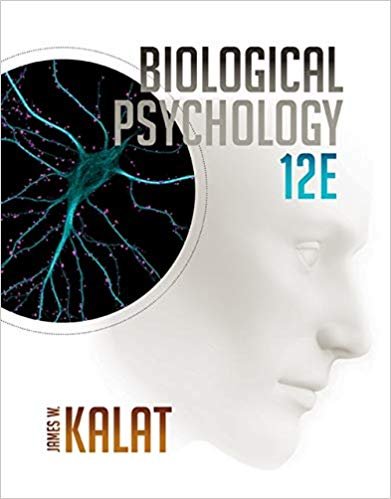
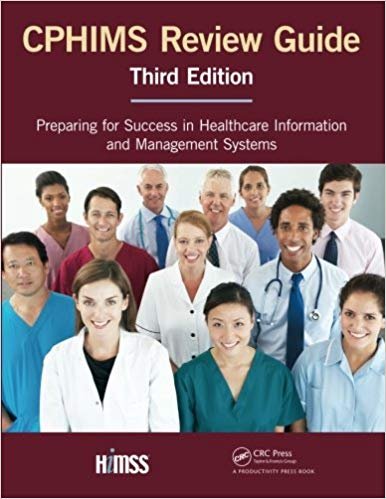
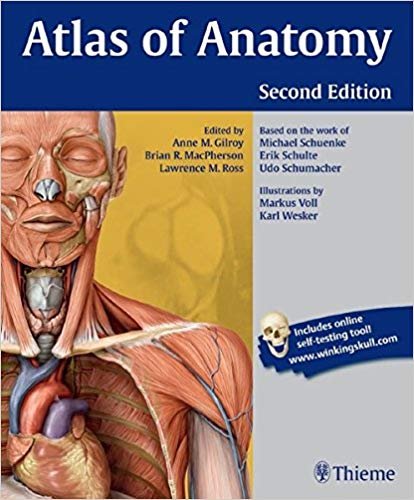
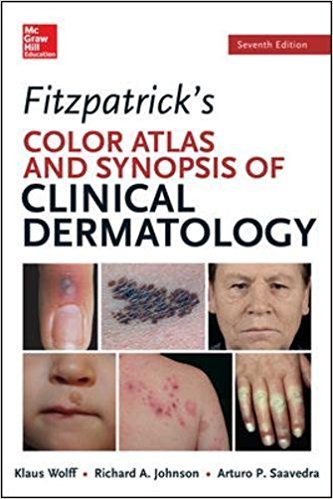
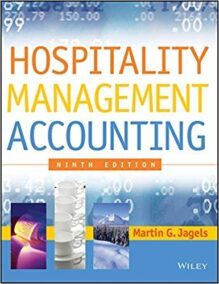




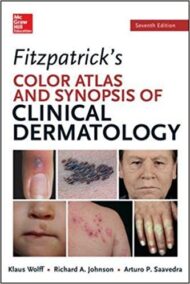
Reviews
There are no reviews yet.